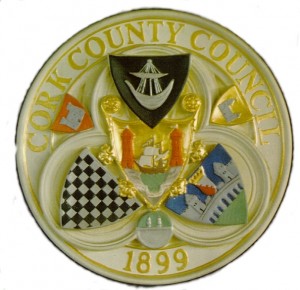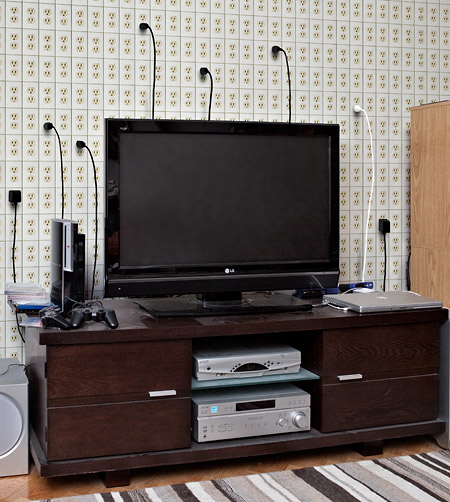18/11/2009
[This is more philosophy than an answer, but I feel people should know why web development pricing is so variable.]
“Is it £35 or £35,000,000?”
I think the best way to answer that question, in true web development style, is “Yes.” My usual answer, when people come to me is, “It depends.” :)
It’s not that we’re trying to be difficult, it’s just that there’s no set price for website design, and there shouldn’t be. Every single site is different, and that’s the way it should be – if all sites were the same, the web would be a very boring place, and eCommerce wouldn’t exist. Of course, there are development companies out there that offer “packages”, but I don’t subscribe to that way of doing things, because when you do business that way, someone *has* to lose out, and it’s usually the client – you get a “site in a box”, just like another hundred the company produced that week or month. In my view, that’s not very innovative, and it’s innovation that stands out on the web. Let’s be honest – if you’re not going to do it right, you might as well not do it at all.
The problem is that you have lots of people jumping on the bandwagon at the moment – people whose knowledge of computers and the Internet could be written in marker on the back of a stamp. (Note to self – what’s a stamp? :) One person I met described them as “Copier Salesmen” – they’re the same guys who saw the boom in copiers back when they first came out, and followed the money. The same is happening with the web – you’ve got people following the money, and these guys shouldn’t be allowed *near* a computer, because all they want is your money. And they’ll do that by selling you a “site in a box”.
Another problem is that web design is quite like traditional design – it’s a service industry that relies heavily on talent, not training. So, in essence, *proper” web development companies don’t have to subscribe to pricing guidelines – we can pretty much charge people what *we think we’re worth*. That may seem harsh, but it’s simply supply and demand – if you want good, you gotta pay for it. If you want average, you pay an average price. If you want cheap, you’ll get tack.
The only exception to that rule are the few companies out there who do damn good work and charge a fair price for it. And they’re few and far between, and the prices are still very variable. I mean, my own company’s pricing has gone up a thousand-fold in the past three years (I kid you not), and I still feel that I’m cutting myself short half the time. I’ve quoted people £20,000 for a website, and found out afterwards that they had been quoted £1m for it. And I wouldn’t be kicking myself for that – I’d be laughing at the gall of the people quoting a million. I couldn’t quote that much money for a site, the guilt would bring me down! :)
Ok, now to answer your question slighly more directly:
How much would I be expected to pay for a site that will contain:
- Introduction page.
- Contact page.
- Host my catalogue of products.approx 120 products.
- Including all set up costs, search engine registration, domain name reg, etc.
- Also annual costs involved.
If you came to me with that spec, the first thing I would do is tell you to go away and come back with a better spec. The problem I have is mainly with point 3 – lots of questions immediately pop into my head when I see that:
- What kind of products are you selling?
- Where/how will you be shipping them?
- Have you researched the tax and shipping costs involved in international orders?
- Do you have a merchant account?
- Will you be breaching your contract by taking orders on the web? (Chances are you will.)
- Do you want to process the transactions in real-time, or will it suffice to receive the orders by email?
- If the former, do you want to store user and credit card data?
- If the latter, do you have an encryption application installed on your computer?
- Do you want to track orders?
- Do you want to integrate the online system with your current system?
I could go on and on. And that’s the reason no-one will quote you directly for website development right off the bat. If they do, or they’re not asking you those questions, you shouldn’t go anywhere *near* them. Why? Because there’s huge variations involved in the questions above. For example, if you want to track orders, or integrate the system, that means more programming on our part. If you want real-time transaction processing, you need to set up with a provider. If you want to store credit card data, you’re jumping into serious money. It means setting up proper security procedures, and shortly that will mean a dedicated machine on your own premises, connected via a (very expensive) leased line. (Why? Because Visa are currently introducing new measures for online trading, and that’s the only way around it.)
My advice? To be honest it’s hard to know what to advise people. The best I can do is to tell you to set aside a good chunk of time to set out *exactly* what you want out of the site, bearing in mind some of the question above, and the way your business currently operates. Don’t be afraid to put every piddling little detail in there – the things that may seem unimportant may be hugely important on the site. Then have a good look around the web and directories for the developers that appeal to you. See if they’ve done sites like what you’re looking for. Look at their style, and their own sites, and their attitude, and use that to judge if they’re up to the job.
Now, don’t phone them and relay all that information to them, email them the spec you spent all that time on. Web developers spend most of their time on the net, and they work best sitting in front of a computer, not on the phone. Plus, when they have the spec in front of them, they’ll be able to go through it in their own time, at their own pace. When they reply, they’ll be able to comment on everything, and explain why this costs that, and any difficulties that might be involved. You also get a price that’s much closer to reality.
If they’re interested – and they should be interested, because creating a website for someone is a lot like going into a partnership – you should try and arrange a meeting, to sit down a sort out any niggles between ye. This is good because the closer the developer can get to an exacting spec of the site beforehand, the less chance there will be of problems halfway through the development, because, for example, you wanted to add something new, when the drafts have been finalised (grrr). After that meeting, then, and only then, will you get an *exact* quote.
And you should understand another thing too – this drawn out process can be bad for us too. I get calls every day from people looking for sites, and I have to go through this process with each and every one of them, because it’s the *only* way you can do it *properly*. And a lot of them call off at the end, because the price is too high, or the project is a lot more complicated than it seemed. That comes down to the fact that an awful lot of people think that setting up a site is a walk in the park. But unless you’re talking about a straight brochure site, it’s not, it’s *hard*. And when they call off, that’s my time and money wasted. It’s a tricky business!
And finally, a direct answer. How much would I quote you for a website like that? Between five and twenty-five thousand pounds. Sorry, best I can do… :)




